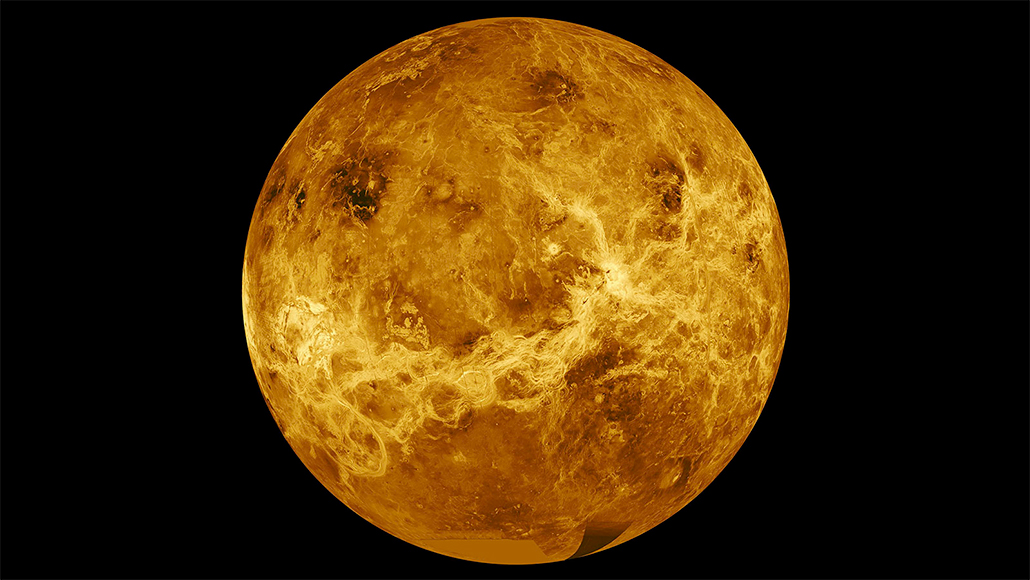
A new look at the nitrogen on Venus may overturn a decades-old assumption about the planet’s atmosphere.
Scientists long thought that atmospheric turbulence would create a uniform mixture of gases in Venus’s atmosphere below an altitude of about 100 kilometers. That’s how it works on Earth. But data from NASA’s MESSENGER spacecraft now indicate that this part of Venus’ atmosphere contains layers of gas with different nitrogen concentrations, researchers report online April 20 in Nature Astronomy.
The unexpected stratification of Venus’s atmosphere may serve as a cautionary tale for astronomers analyzing the atmospheres of planets around other stars, says Patrick Peplowski, a physicist at Johns Hopkins University Applied Physics Laboratory in Laurel, Md. The new results suggest that observations of a planet’s upper atmosphere from afar don’t necessarily reflect conditions closer to the surface.
Peplowski and colleagues analyzed measurements of neutrons escaping from Venus’ atmosphere made by MESSENGER as it flew by the planet in 2007. Neutrons are produced by galactic cosmic rays hitting gas in Venus’ atmosphere between about 60 and 90 kilometers off the ground. Since nitrogen tends to absorb neutrons, the number of neutrons that escape reveal nitrogen content.
Gas at altitudes from 60 to 90 kilometers must contain about 5 percent nitrogen to create the neutron counts measured by MESSENGER, computer simulations showed. In contrast, space probes in the 1970s measured a nitrogen concentration of about 3.5 percent closer to Venus’ surface, at altitudes below 45 kilometers (SN: 12/16/78).
It’s not yet clear why nitrogen in the upper atmosphere is more abundant than in the lower atmosphere. But the apparent divide between nitrogen layers overlaps with a persistent blanket of sulfur dioxide clouds about 50 kilometers above the ground, Peplowski says. “I do wonder if it’s a coincidence, or if the same processes that form that cloud deck are responsible for somehow separating the lower and upper atmospheres.”
Source: Space & Astronomy - www.sciencenews.org


